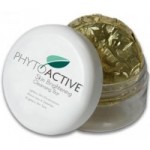In years past, hydroquinone was the standard ingredient for skin-lightening treatments. It was thought to be the safest and most effective treatment for hyperpigmentation, age spots, melasma, and sun damage. However, new research suggests that there may be serious side effects associated with long-term use of synthetic hydroquinone (including recent research showing that it is a neurotoxin) and show links to developmental and reproductive toxicity. When applied topically, hydroquinone may cause an allergic reaction on the skin, and recent studies have suggested that hydroquinone may be a carcinogen, with long-term use of this potent chemical increasing the risk of skin cancer.
Fortunately, there are some effective botanical ingredients that mimic the skin lightening properties of hydroquinone – without the toxic side effects. Ingredients such as kojic acid and licorice have become quite popular along with more advanced ingredients like l-Arbutin, glutathione, n-acetyl glucosomine and niacinamide. When combined, these ingredients can often produce results that even surpass hydroquinone but without the associated risks.
Before starting any type of protocol to lighten the skin, it is important to understand the primary causes of most hyperpigmentation: unprotected sun exposure and glycation. What is glycation, you ask? Glycation is a physiological reaction that takes place in the body when simple sugar molecules such as fructose or glucose become attached to proteins or lipid fats without the moderation of an enzyme, which results in the formation of rogue molecules known as advanced glycation end products (AGEs). This leads to a number of heath problems, including skin discoloration and inflammation.
Much of what is known about glycation’s ill effects comes from diabetes research: The connective-tissue damage and chronic inflammation resulting from diabetics’ sustained high blood sugar can lead to debilitating conditions, such as cataracts, Alzheimer’s, vascular tightening, and diseases of the pancreas and liver. Simply put – SUGAR is enemy #1!
The following ingredients are healthy AND very effective alternatives to synthetic hydroquinone Be sure to look for them on your product labels:
N-Acetyl Glucosomine:
N-acetyl glucosamine (NAG) is an amino sugar that is a precursor to hyaluronic acid and is found throughout nature and human tissues.
Its de-pigmenting ability originates from the inhibition of tyrosinase glycosylation, a step necessary in the production of melanin.
Niacinimide:
Niacinamide is a biologically active form of niacin (vitamin B3) found widely in many root vegetables and yeasts. Niacinamide has several proposed medicinal applications in the skin including anti-inflammation, prevention of photo-immunosuppression and increased intercellular lipid synthesis.
Arbutin: Derived from the leaves of blueberry, bearberry, cranberry, mulberry shrubs, or from certain genus of pear, arbutin contains the natural form of hydroquinone, which will inhibit the production of melanin by the skin.
Azelaic acid: Most commonly, this ingredient is used to treat acne but recent studies have shown azelaic acid beneficial for the treatment of skin discolorations, as well. Azelaic acid is made from the grains of wheat, rye, or barely, and is usually found in creams at a concentration of 20 percent. Studies have shown it to be effective in treating melasma and inhibiting melanin production.
Bilberry extract: A relative of blueberries, bilberry fruit contains tannins that have natural astringent and anti-inflammatory properties. Traditionally used by herbalists to treat blood pressure and prevent the formation of blood clots, bilberry is also an excellent antioxidant. Recently, bilberry has proven useful for treating hyperpigmentation and sun damage due to its chemical composition, which includes botanical hydroquinone, vitamin A, and vitamin C.
Kojic acid: Derived from a fungus, kojic acid also inhibits melanin production in a similar fashion to hydroquinone. This ingredient oxidizes quickly and will turn brown if left exposed to air, so check the expiration date carefully and be sure to store in a cool, dark place, away from heat or light.
Lemon: Used to lighten hair, bleach freckles, and whiten faded or yellowed cotton clothing, lemon is a valuable home remedy women have been turning to for years. Lemons help brighten and clarify the skin with citric acid and vitamin C and may be applied topically to the skin with a cotton swab, straight from the freshly sliced fruit. However, fresh lemon juice can be drying to the skin so be certain to apply moisturizer after treatment to keep the skin hydrated.
Licorice extract: A tyrosinase inhibitor, licorice extract is a potent skin lightener that disrupts melanin synthesis by the skin, and also has anti-inflammatory properties. Studies have suggested that licorice may be up to 75 times more effective than vitamin C in fading hyperpigmentation, and it may safely be used by anyone who is allergic to hydroquinone.
Malic acid: An alpha hydroxy acid derived exclusively from apples, malic acid has protective and moisturizing qualities, making it ideal for use on sensitive skin, or those suffering from Rosacea or other skin concerns.
Vitamin C: Vitamin C, also known as magnesium ascorbyl phosphate, ascorbic acid, ascorbyl glucosamine, l-ascorbic acid, and ascorbyl palmitate, is a common ingredient found in many botanical skin lighteners that is also a first-class antioxidant. Although studies have indicated that vitamin C does inhibit melanin production at concentrations above five percent, most skincare products available over-the-counter are not quite this potent. For this reason, vitamin C should be used in conjunction with other treatments for a skin-lightening boost.
If you are serious about fading dark spots or uneven skin tone, you must be committed to the process—it takes time, but the results are totally worth it. Results can take anywhere from one to three months, and you must wear sun block daily for optimal results. Any unprotected UV exposure can potentially cause further hyperpigmentation and must be guarded against carefully.
 My PhytoActive Skin Brightening Bar was developed to specifically address the needs of discolored, sun damaged skins and provides deep detoxification and moisture replenishing benefits – all in this one amazing skin cleanser.
My PhytoActive Skin Brightening Bar was developed to specifically address the needs of discolored, sun damaged skins and provides deep detoxification and moisture replenishing benefits – all in this one amazing skin cleanser.

